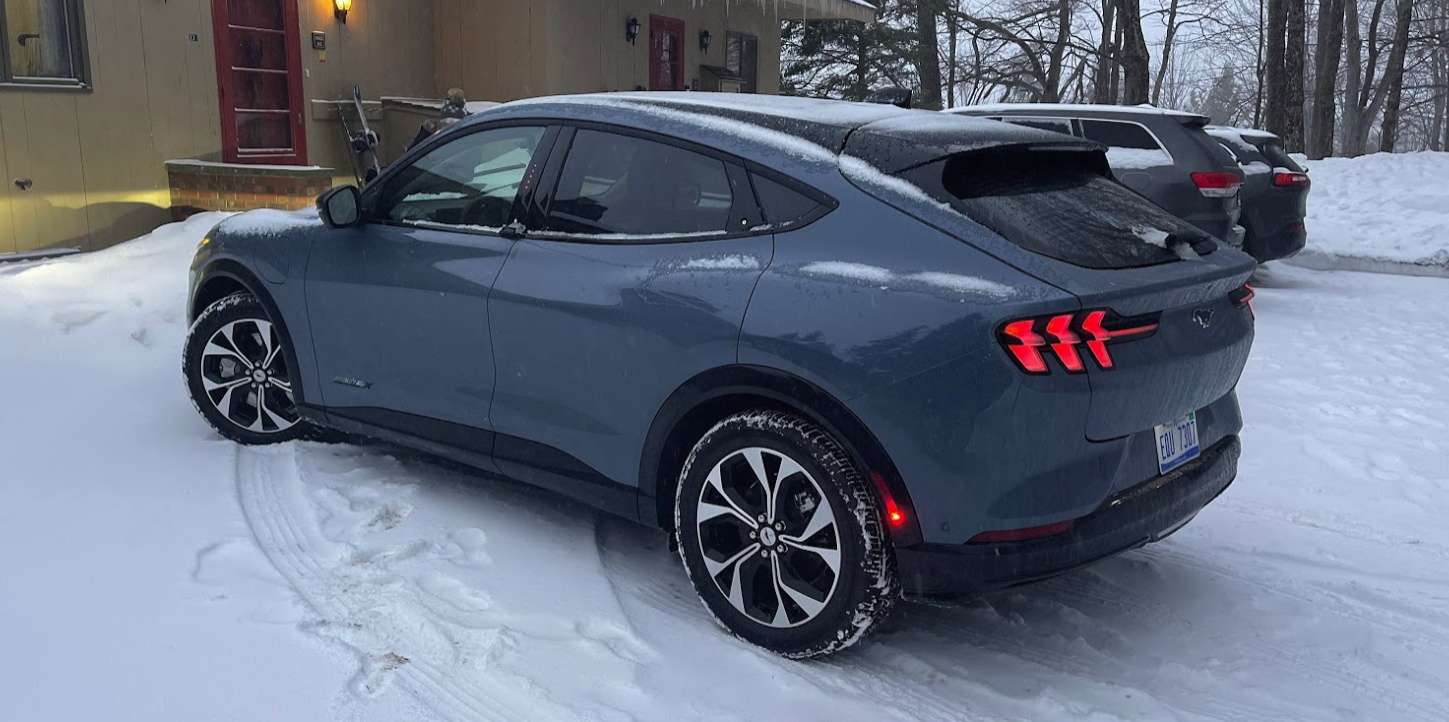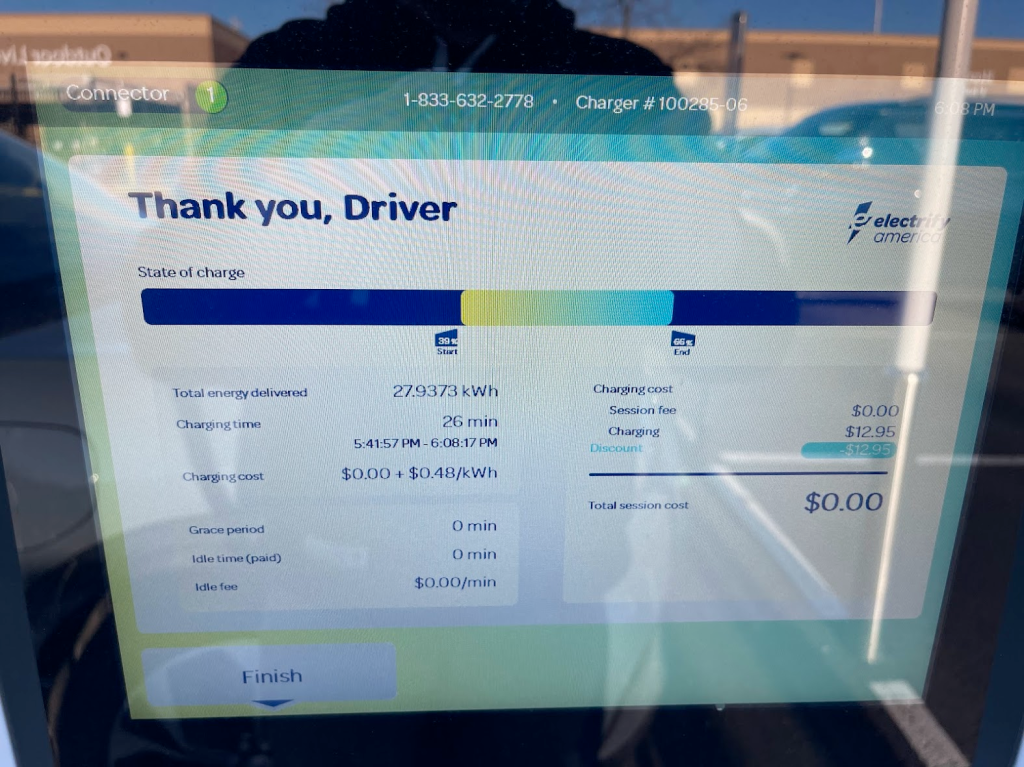BlueCruise 1.2 on 2023 Mustang Mach-E hands… off review


Like many autonomous driving systems, Ford’s BlueCruise (also called Lincoln ActiveGlide) has been a work in progress since we first used it on the 2021 Mustang Mach-E. Things have changed a lot in two years, however. For version 1.2, the following are the major new features that Ford is hyping and I am testing.
- Lane Change Assist can help drivers move through traffic on the freeway with more confidence while using BlueCruise. The system will perform a hands-free lane change when requested by the driver tapping the turn signal, and it can even suggest if a lane change would be beneficial when following slow-moving traffic.
- Predictive Speed Assist automatically and smoothly adjusts the speed as drivers approach a sharp curve and will help signal the driver ahead of time when a speed change is about to occur so they understand why the vehicle is slowing.
- In-Lane Repositioning makes the hands-free highway driving experience feel more natural, keeping the vehicle in its lane while subtly shifting the vehicle’s position away from vehicles in adjacent lanes – especially helpful when next to bigger vehicles such as semis.
I took the Mustang Mach-E on Interstate 87 from Albany, New York, down toward New York City for about 120 miles. That route is blessed by Ford and available for hands-free BlueCruise. Ford is rapidly expanding on which roads are compatible but still hasn’t reached quite as wide as GM’s SuperCruise or Tesla’s AutoPilot. Tesla will let me attempt to autonomously traverse my driveway and anything bigger.
Ford’s BlueCruise is activated when you hit the far left button on the steering wheel. Immediately, you are in Autonomous mode. You will need to keep your hands on the wheel, but when the car registers that it is on an approved highway, it will signal that you can go hands-free.
Once you are hands-free, you need to keep your eyes on the road. Ford is watching you from a camera mounted to the windshield behind the rearview mirror and another set of eyes behind the steering wheel. If you look down for more than a few glances or cover your eyes, the car starts beeping, then proceeds to freak out with lights, sounds, and even braking events.
As I left Albany, I put the car into BlueCruise and wasn’t alerted until the first turnpike exit, where the car requested I put my hands on the wheel. This happened at every on-ramp/exit for the next 30 or so miles, when it eventually stopped.
Lane Change Assist
The easiest and most common new feature is lane change. If you come up to a car going much slower than yourself, BlueCruise will ask you if you want to do a lane change. You initiate it with the turn signal, and it works incredibly smoothly (especially compared to Tesla’s early efforts). The downside is that after you change lanes, you have to turn off the signal rather than it shutting itself off.
You can initiate this on your own as well, and in my testing, it worked reliably.
Predictive Speed Assist
This one kind of crept up on me, and I’m pretty sure that’s a good thing. As I approached tighter turns, the car slowed down from its set speed. But it did so in a way that was almost unnoticeable and just a few miles per hour. This feature was much more notable on the curvier Taconic parkway we took to Albany, where the car would drop 5-10 miles per hour of speed.
In-Lane Repositioning
This is one of those features I’ve been hoping to see for a while on my Tesla Model Y. As we maneuver through tight spots, the car centers itself in the lane, whether or not there is a car in the lane next to me. But that’s not natural.
When you pull alongside another car, Ford subtly moves the BlueCruise vehicle to the other side of the lane if there isn’t a car on the other side of you. That way, it feels a lot safer, and it is something we often do naturally and subconsciously. I wouldn’t have noticed this at all if I hadn’t been looking for it. But it does make the car and the system feel safer.
Other things
It has been two years since I’ve been behind the wheel of the Mustang Mach-E, though I did try BlueCruise 1.2 on the Ford F-150 in October. The difference two years makes is night and day for BlueCruise. But there were some other things I wish could have moved as fast.
I wish Ford could improve charging speed a bit. At an Electrify America 350kW charger, I went from 39% to 66% charge in 26 minutes, which works out to just over a kWh per minute of charge. That’s quite slow, even though it was cold. Ford needs to work on battery conditioning and the charge curve to deliver higher rates of charge.

Staying on charging, I would like to see an internal screen showing the charging specs, even when the car is off. As it stands, there is a little external circular six-spot light bar that shows the charging status, but it is hard to read. I need more info!
City Dwellers’s Take
I’ve said it before, and I’ll say it again: Hands-off autonomy is so much nicer to use on the open road than having to keep your hands on the wheel. That’s why I think SuperCruise and now Ford’s BlueCruise are better experiences on the road than Tesla’s Autopilot.
With your hands off the wheel, you feel like a passenger, and with the car keeping an eye on your eyes, you are free to look around a lot more, eat a sandwich, and adjust your seating position in ways you can’t with your hands on the wheel.
Ford, for its part, is moving the needle quite a bit in the right direction and already has a product that will lighten the mental and physical load of a driver on interstates.
FTC: We use income earning auto affiliate links. More.